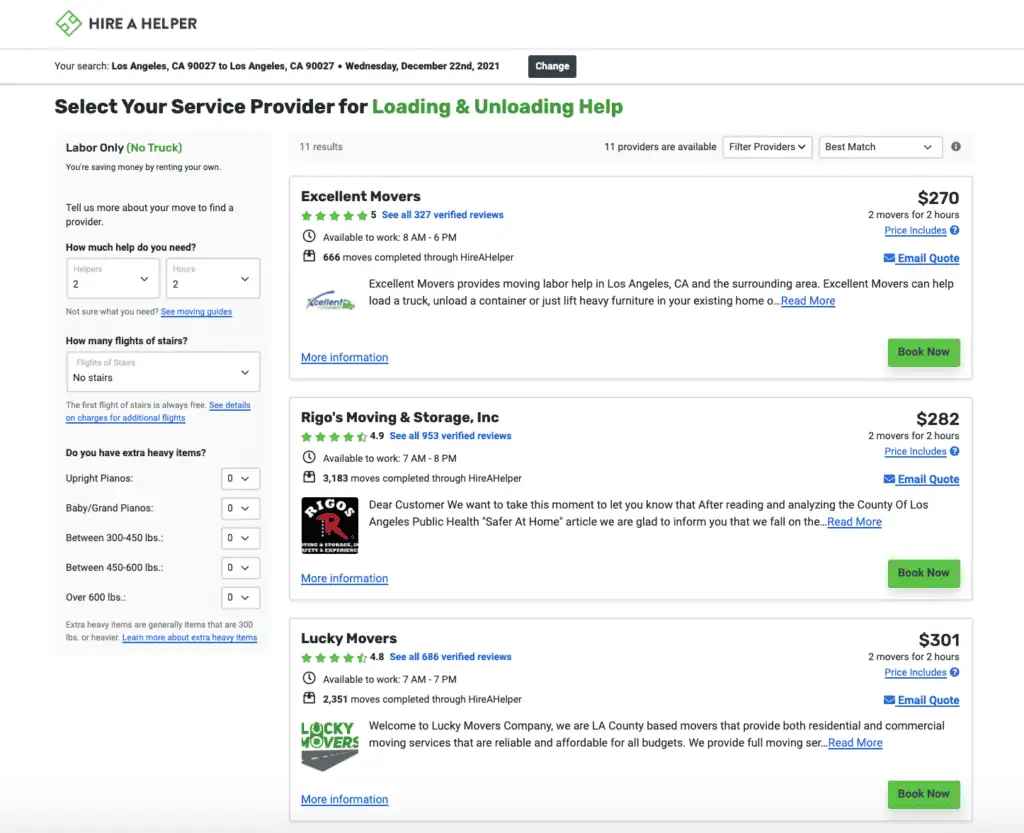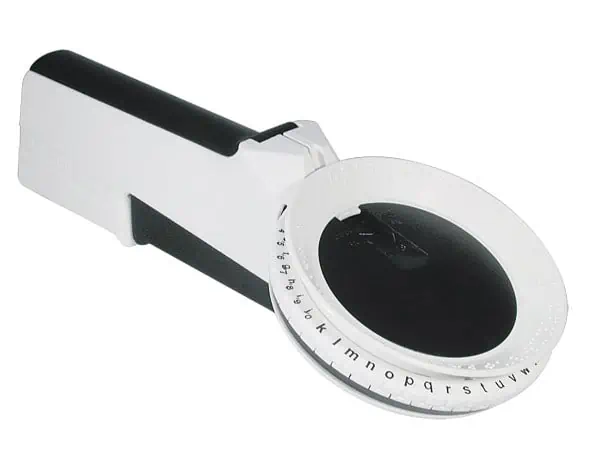We often write about how to move things like houseplants, your pantry, and even your dog. But what happens when you’re moving not just things, but also your livelihood?
This is often the scenario for photographers who are moving. This places a huge burden on their moves to be speedy, but also needing it to be extra safe. Not a great combo.
To help iron out this problem, we spoke with Seattle-area professional photographer Brianna Bray to walk you through the most important things about moving your photo studio.
Why is moving photography equipment a big deal?
A $11.5 billion industry, photography is an essential profession in small and big cities alike. Capturing important and intimate moments of life knows no borders.
Given that photography is needed everywhere, this means photographers are often on the move. And when they relocate, the average professional photographer is likely moving at least $10,000 worth of photo equipment to a new area — not something you want to leave up to a random stranger to pack. (Yes, professional studio movers ARE a thing, you sometimes just have to ask.)
How Professional Photographers Prepare To Move Photography Equipment

Whether you’re planning to move your photo studio somewhere permanent or temporary, the pros advise creating a detailed moving plan any time your equipment is transported anywhere, no matter how you do it.
Give your photo equipment its own packing day
When you decide to move, give yourself plenty of time to pack your equipment carefully. “It’s always better to be safe than sorry. Take your time packing your equipment and triple-check your gear,” says Brianna Bray. Thus, she recommends relegating your photo packing to its own day.
Write down important measurements
If you have any large photo equipment in your studio (or just a lot of it), it’s a good idea to write down the height and width measurements of your largest equipment AND the dimensions of your new location. If you can’t physically measure the new area, ask your realtor to help you get the dimensions of whatever space is intended to become your new photo studio. If this isn’t possible, research storage units in the area so you have a backup plan in case something doesn’t fit.
Here’s a helpful guide for determining how much space you need for a photography studio.
(Additionally, estimating the size of your current setup will help you determine what size moving truck you may need if you intend to rent a truck or hire professional movers for the job.)
Inventory and photograph your equipment
Regardless of whether you’re an amateur or professional photographer, you likely have equipment. It’s a great habit to create an inventory list for every single item you own.
Your photo equipment inventory list should include:
- Cameras
- Tripods
- Computer equipment
- Lighting apparatus
- Photo gear cases
- Camera bags
- Lenses
- Digital accessories
- Reflectors
- Etc.
Make a separate column to record the condition of all of your items. (You get bonus points for taking photos and digitizing receipts, in case you need to pursue reimbursement.)
You can use a pre-written equipment list like this one to help jog your memory.
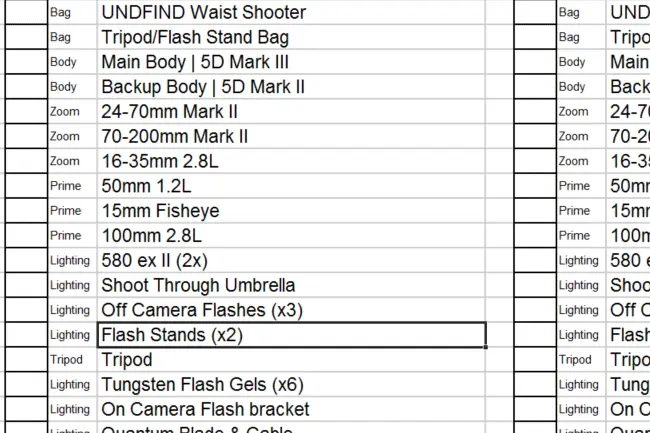
Get camera moving insurance (or don’t)

Cameras are typically covered by most home or renter’s insurance policies, but they usually only cover things like theft, vandalism, and fire. But for more likely problems like loss and damage (especially in between homes), generic policies probably won’t cut it. Call your insurer to explain your specific situation and ask them what you’d need. Consider specific electronics insurance if you feel your collection is important enough.
As a bonus, because you just made an inventory (you did, right?), you can easily share it with your insurer! Include how much you paid for each piece of equipment. Update your inventory as you get rid of gear or add new pieces over time.
Is insurance really necessary?
Even if you only have a single lens, no one is so amateur they deserve to lose hundreds of dollars due to a broken camera.
Still, insurance isn’t always the best option. Consider a cost-benefit analysis: how much extra would it cost to hand-carry your equipment instead of insuring it for a move inside a moving truck? If you haven’t invested much in your studio, it may not make sense to spend extra. However, far fewer photographers insure their equipment than likely should (especially if you’re moving long distances!).
Get Help Unloading Your Rental Truck
See prices for movers by the hour—instantly.
Read real customer reviews.
Easily book your help online.
Camera Cases
When it comes to transporting your camera and lenses, it may be tempting to bubble wrap everything and put it in a box. However, bubble wrap is not usually the best option for moving expensive equipment.
For this part of your gear, there really is no replacement for a proper camera bag or hard case. Brianna suggests investing in a high-end case to avoid both damage and stress on your equipment during a move. “A hard case with shock-absorbent padding inside is always going to be the best option,” suggested Brianna.

Yes, these cases can be pricey in themselves, typically running you about $200 to upper $300s on Adorama and Amazon, especially for higher-end brands like Pelican. So if you’re already committed to spending this much, another option is to order a custom case to make sure your equipment fits like a glove, which will typically run you between $300 and $400.
Budget Option: Casematix Hard Shell Camera Case – $28.99
If you’re moving on a budget, Casematix makes a solid basic camera hardshell case. While you won’t get the same durability and weather resistance as a more deluxe option, the egg-crate foam interior and hard plastic exterior still makes this a superior choice for moving day.
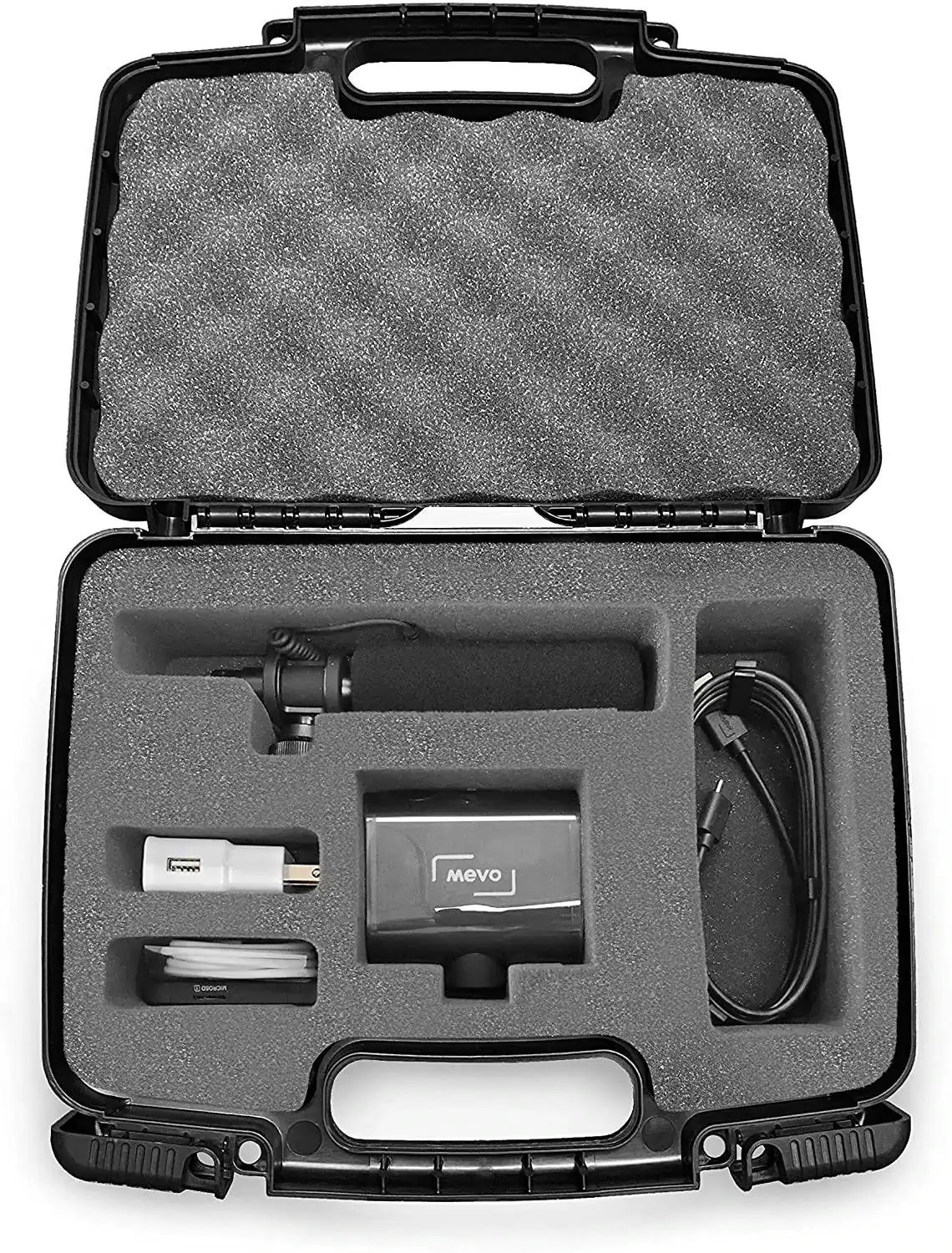
Higher-End Option: Pelican 1510 – $209.95
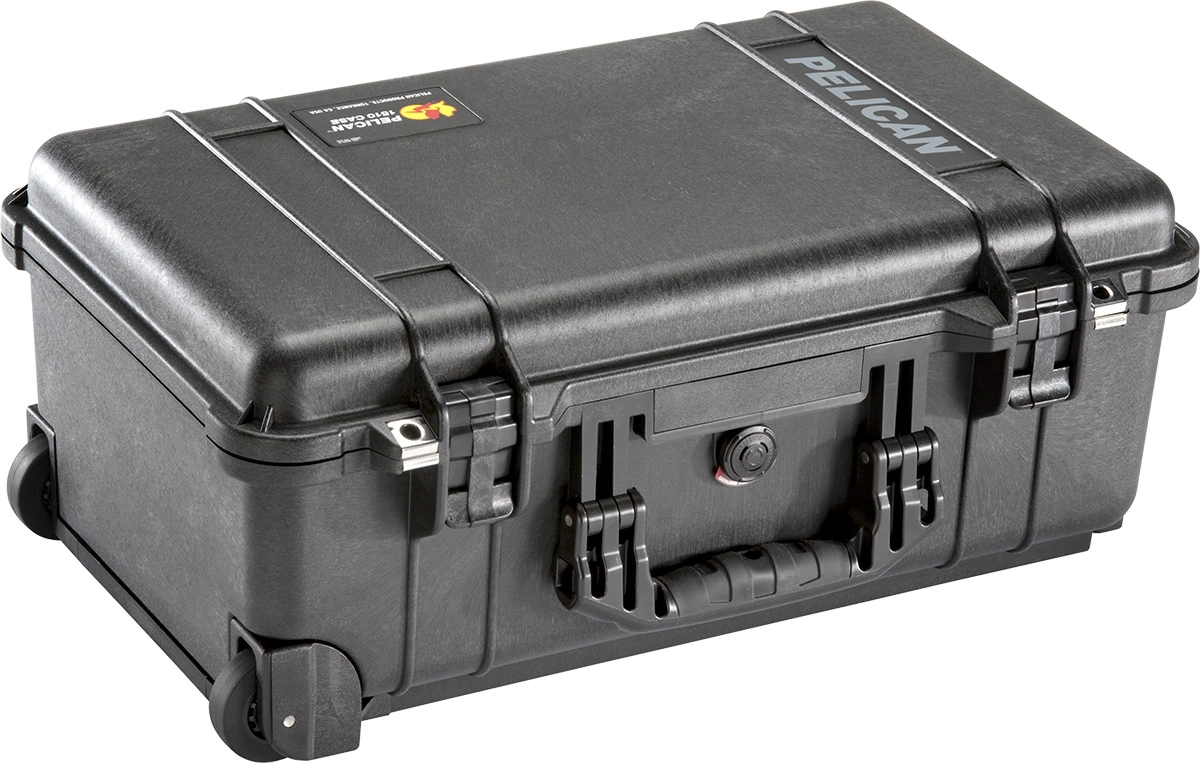
It’s no secret in the photography world that Pelican makes great cases. For photographers who can spend a little more on a case, Pelican 1510 is a carry-on sized option that is great for both short and long-distance relocations with both roller wheels and a pull handle. Watertight and crushproof, the 1510 is pretty durable and will keep your gear safe in all kinds of weather and temperatures.
Custom Option: My Case Builder, Nanuk 945 – $360.09
For those looking for a custom hardshell, My Case Builder offers a variety of options. The Nanuk 945 is fully customizable through a customized builder app, which lets you look up your existing camera equipment for foam perfectly matched to your gear. The Nanuk 945 is also dustproof, waterproof, and fully TSA-compliant.

Protip: If you earn income from your photography and pay taxes, you should be able to include these expenditures as business expenses when you file your taxes (be sure to double-check with your accountant for specific tax information).
For the rest: bubble wrap, stretch wrap, and foam
For less expensive and fragile equipment like lights, backdrops, props, and hard goods, boxes and bubble wrap can be a good solution. Just make sure that you buy enough so you don’t have to skimp on moving day.
Bubble Wrap
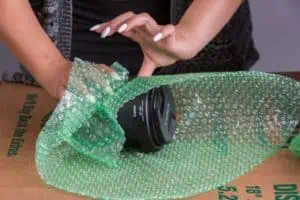
We recommend getting a large, 100-foot roll of bubble wrap from a department or office supply store. Bubble wrap all hard items that you don’t want getting scratched or bumped, like monitors, external hard drives, battery grips, and props.
Stretch Wrap
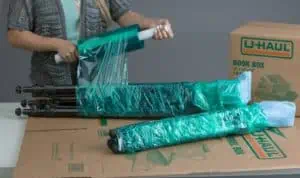
Invest in stretch wrap to secure the legs of tripods and umbrellas, light stands, and stacks of hard goods.
Packing Foam/Dish Foam

Packing foam can be used as a soft extra layer of protection for smaller components that you’ll be boxing up and want to avoid getting scratched like filters and lights.
How to pack camera equipment if you DON’T have a special case
You want to avoid using plain old cardboard boxes with no padding for your camera stuff. That said, if your only option is cardboard, get boxes that are big enough to properly fit your other equipment, but that don’t stretch the sides of the box. You’ll also want to have enough boxes to avoid overloading a box and blowing the bottom out.
If you have a lot of fragile items that cardboard can’t properly protect, consider using a wood-moving crate instead of boxes. While they are a little more expensive, this is a better way to ensure that your livelihood isn’t damaged during a move.
“Even if you only have a single lens, no one is so amateur they deserve to lose hundreds of dollars due to a broken camera.”
But no matter what you use, it’s crucial that you avoid empty space inside of where you are packing them. Empty spaces are an opportunity for items to move and crash into each other in transit, which can easily lead to damage. That bubble wrap you got is a great way to take up space, but you can even use crumpled-up newspaper, dish towels, or balled-up plastic bags if you have extras laying around.

Transporting Your Studio
Packed? Now you have to choose the best transportation option for you. Photo studios come in many different shapes and sizes, which means you have a surprising amount of options. Here are the best ones.
You should always hand-carry your photography equipment, if possible
If you’re moving your studio across the country, Brianna suggests bringing your cameras with you, whether you’re driving or flying. If you’re flying, she highly recommends that you prioritize your most expensive camera by making it your carry-on.
If things are out of your hands (literally), you really need to try and keep your studio gear separate from other items. Label your boxes as fragile, of course. You might also want to give them an additional label, so you know that it’s your photo gear.
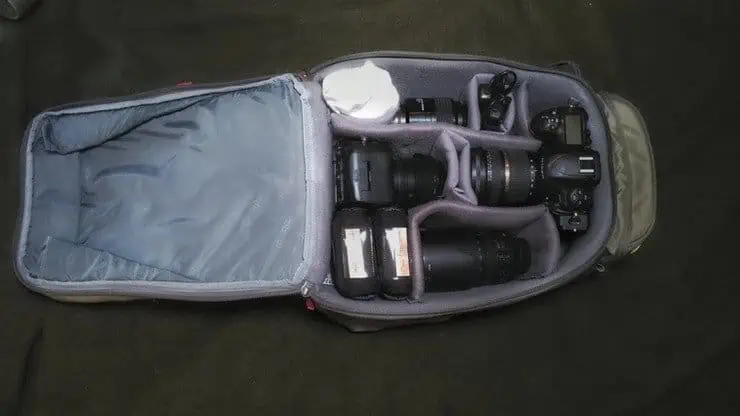
Mailing your camera equipment is a realistic option
You actually have the option to use a postal provider like FedEx to ship your gear to you. If you do this though, be sure to plan enough time to ship if you choose this, and cover your purchase with insurance when possible. As Brianna explained, “If you have to ship your gear, I would heavily research the carrier company prior to using their services. See what company has the least issues, best insurance options, ideal shipping speed, etc.” She added, “Make sure everything is labeled as ‘fragile’ as well.”
Also, don’t advertise that the boxes contain photography gear. A simple “PS” (for photo studio) will alert you that the materials belong in your studio without advertising to potential thieves that the packaging contains expensive goods.
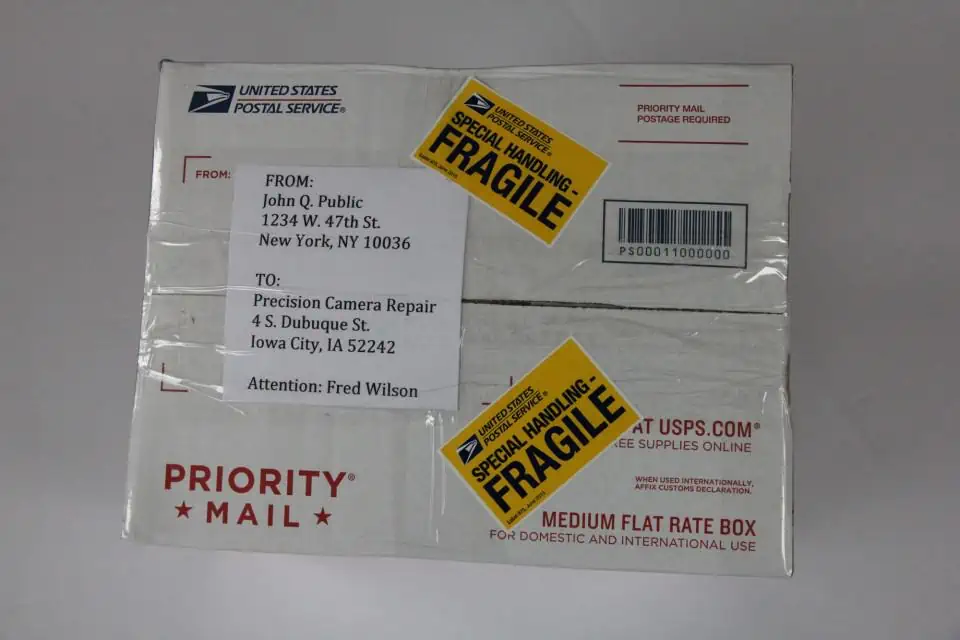
Properly secure them in your rental truck or vehicle
If you’re carrying your items or transporting them in your own vehicle or rental truck or container, you’ll have to consider just a few more logistics. Will all the items fit into your vehicle, or do you actually need to rent a moving truck? (Also, do you have experience driving a moving truck large enough to fit your studio plus anything else?)
When packing your vehicle or a moving truck, you’ll need to ensure that your cases and boxes are secure. This means doing these things:
- Renting or buying moving blankets
- Securing boxes in place with straps and bungee cords to secure boxes in place
- Creating a security strategy to avoid theft during transit
And it sounds obvious, but Brianna cannot stress enough, “Never leave your equipment unattended. I always have my gear properly packed and then stored in the trunk of my vehicle. You never know when your car could be broken into so best to not leave anything in sight.”
Get moved by professional studio movers for a few hundred bucks
Because your photography studio constitutes a significant investment and, possibly even represents your livelihood, you may just want to hire a professional moving company to relocate your studio, along with your other things. In fact, some moving companies are actually professional studio movers, meaning they have specific experience moving your exact equipment.
Take time to get to know moving companies in your area if you’re moving locally, as you may be able to hire labor-only professionals for only a couple hundred bucks. And if you’re moving long-distance, reputable moving companies should be able to uniquely assess your studio and move it for you. Either way, just make sure to check out online reviews to ensure the company you pick has a good safety record.


